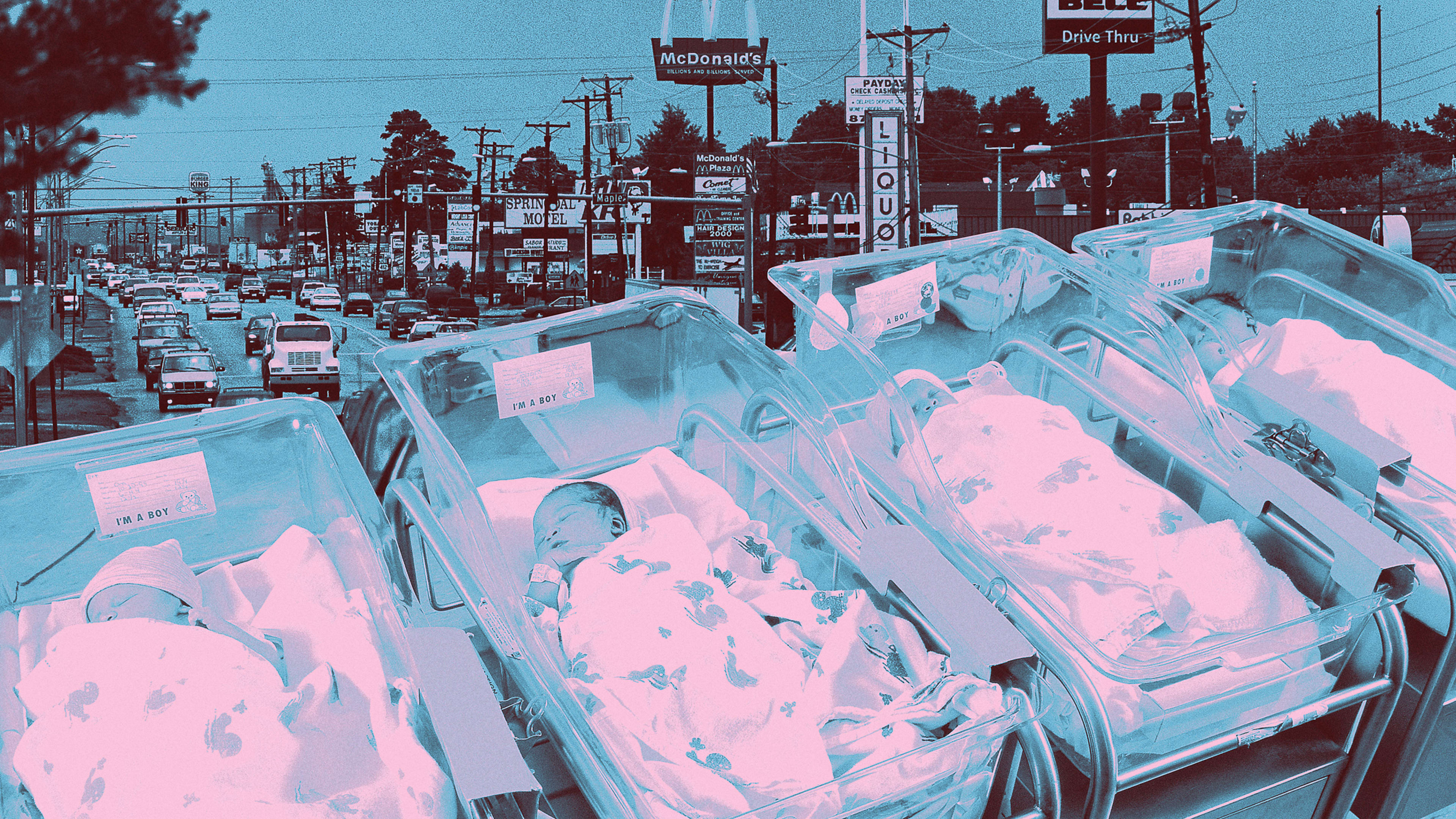It’s classic Biology 101: A mother has two sex chromosomes, X and X, and a father has an X and a Y, and the combination in a new embryo determines the sex. So, statistically, there should be an equal number of newborn male and female babies in the world. But, in reality, there are slightly more boys than girls. According to World Bank data, the global sex ratio at birth (SRB) of males to females in a population stands at around 107:100.
In order to offer some explanations for this phenomenon, a team of scientists did a large-scale study, attempting to find associations between various societal and environmental factors for shifts in the SRB in both directions. They found that factors including chemical pollutants, food deserts, and crowdedness led to slight changes in SRB. They note these are only correlations, so more work has to be done to assess direct cause and effect, and to explain why it might be happening, biologically.
Sex is determined at conception, when parents’ chromosomes pair up in random fashion. So, it’s likely later, during pregnancy, when environmental factors could shape the fate of an embryo, says Andrey Rzhetsky, professor of medicine and human genetics at the University of Chicago, and one of the study’s authors. Whether more male or female embryos die during gestation—essentially, via miscarriages—probably determines the SRB. Under different circumstances, embryos of one sex are dying more often, skewing the SRB one way or the other. “Sex ratio is determined by the environment because some embryos are dying spontaneously,” he says. “And we don’t know why.”
Using national data, the team studied the entire Swedish population (about 9 million) over the course of 30 years, and half the U.S. population (about 150 million) over the course of 8. They tested 100 hypotheses, including environmental factors like the presence of mercury in water, lead in land, and air pollution particulates; and social factors, such as traffic, high renter-occupancy level, and “negative food-related business,” an EPA term denoting an area’s higher prevalence of unhealthy eateries like “fast-food restaurants, convenience stores, and pretzel trucks.”
They found that some of the factors produced more male babies born compared to females, while others produced the opposite. For instance, pollutants like mercury in water and fine particulate matter in air were associated with more male babies, whereas lead in land correlated with more female babies. Extreme drought and traffic fatality rate were associated with males; high renter-occupancy level and fast-food prevalence with females. Within some groups tested, the researchers registered up to a 4% change in the SRB, which would equate to about 40,000 babies in a population of 1 million.
Rzhetsky notes that these are simply associations, not causes and effects. Still, he argues that they are more than coincidences, given that sex ratio consistently varies across the U.S. Without further work, he won’t speculate much as to why, biologically, these changes happen. He says, it’s established that stress factors can cause termination, so it’s possible that a biological mechanism terminates a pregnancy under unfavorable factors, when high stress hormone levels are detected, to try and keep a mother safe.
He’s also open to a possibility, as other scientists have suggested, that the stress factors skew survival of gametes (the cells that come together to form an embryo) of one sex more than another, meaning that the environmental effects are happening before gestation. But, because the chromosome pairing is random, he thinks the miscarriage theory is more plausible. To ascertain more, and concrete, explanations, he recommends further work, probably with lab mice, or experiments with human cell tissues—both embryos and gametes.
A notable, and perhaps surprising, finding from the study was that some factors, which scientists long thought would be prime drivers of sex ratio change, including changes of the seasons and of ambient temperatures, were not associated with SRB shifts. Nor were stressors such as violent crime and unemployment. But, “Absence of proof is not proof of absence,” Rzhetsky says, again recommending further study.
Recognize your brand’s excellence by applying to this year’s Brands That Matter Awards before the early-rate deadline, May 3.
